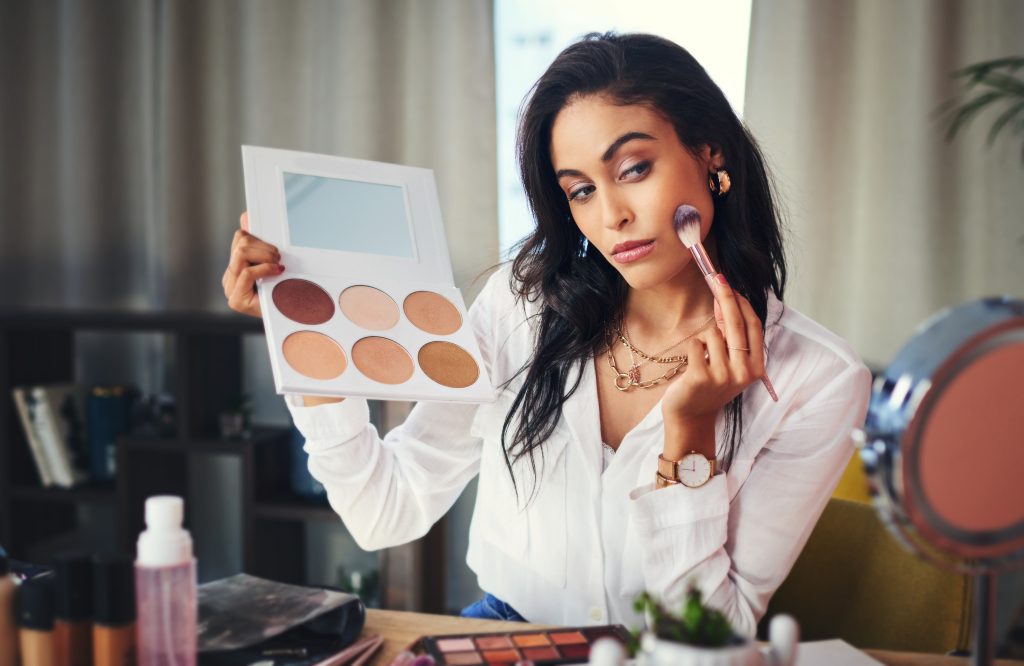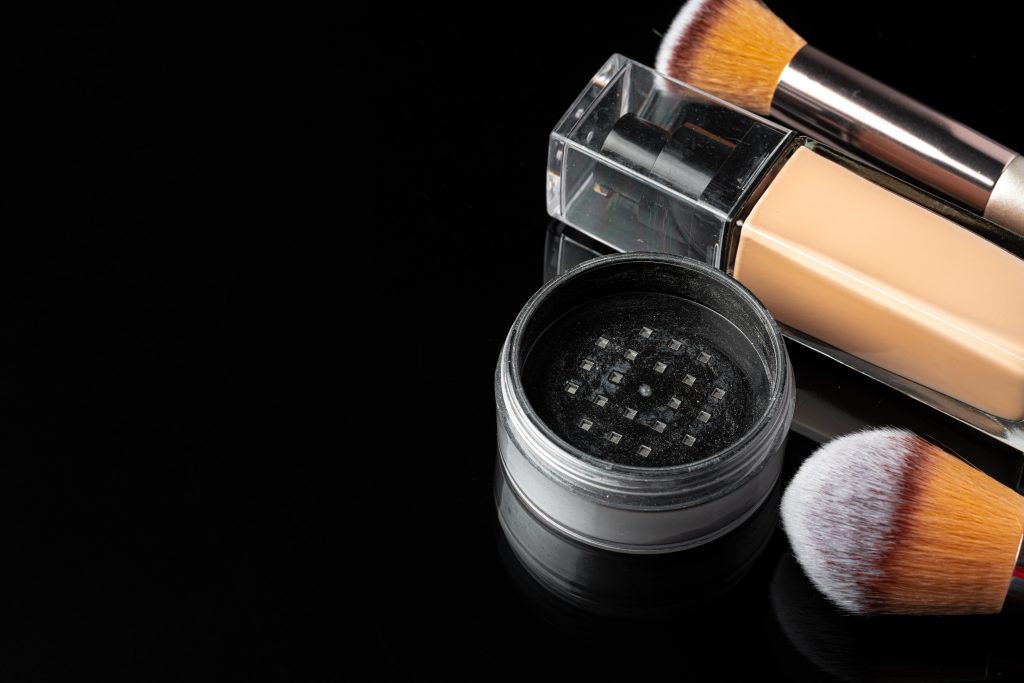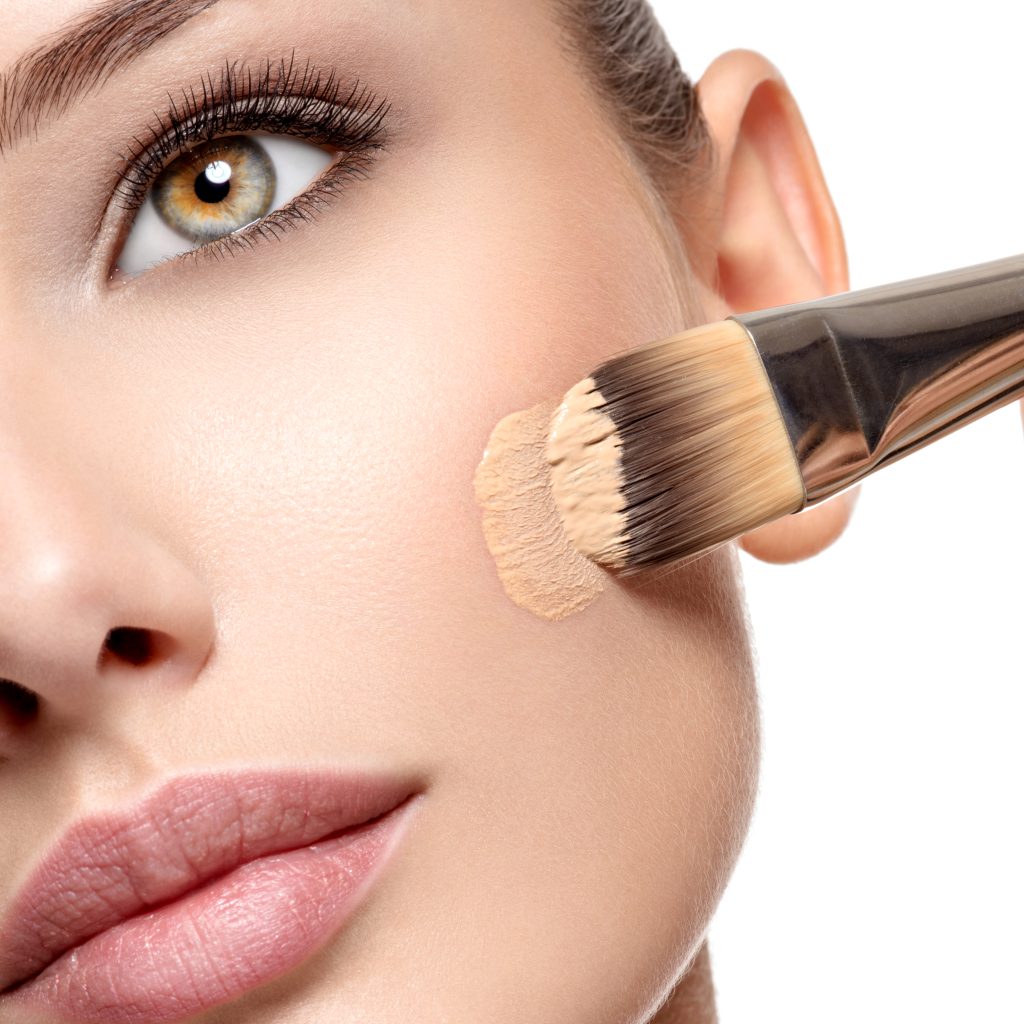
Foundation secrets are the key to achieving a flawless makeup look that lasts all day.
First and foremost, a well-applied foundation creates a smooth, even canvas that enhances the rest of your makeup, from blush to eyeshadow. Without this essential base, your makeup can appear uneven or fade quickly, undermining the overall effect. Therefore, mastering foundation application is crucial for achieving a polished and long-lasting look. Whether you prefer a natural glow or a full-glam finish, the perfect foundation ensures your makeup stays flawless throughout the day.
Choosing the Right Foundation
There are many secrets for a flawless foundation, but the most important steps start with choosing the right formula. Foundation comes in various types, including liquid, powder, stick and cream, each offering distinct benefits. For example, liquid foundations are popular for their versatility, providing buildable coverage and a natural finish. On the other hand, powder foundations are ideal for oily skin or for achieving a matte look, while stick foundations offer convenience and full coverage, making them perfect for on-the-go touch-ups. Additionally, cream foundations provide a dewy finish, which works especially well for dry skin. Therefore, understanding the different formulas will help you select the best foundation that suits both your needs and preferences.


How to Select the Right Shade for Your Skin Tone
Another crucial step to achieving a flawless base is selecting the right shade for your skin tone. The perfect foundation shade should match your natural skin color, blending seamlessly to create a uniform, natural appearance. To find the right match, it’s best to test foundations along your jawline or wrist to ensure it blends into your neck. Furthermore, it’s important to consider your undertone—whether it’s cool, warm, or neutral—since this can make a significant difference in how the foundation complements your complexion. If you’re still uncertain, try choosing a shade slightly lighter or darker than your natural skin tone, as this can create a more radiant or contoured look.
Tips for Different Skin Types (Oily, Dry, Combination)
Lastly, the secret to a flawless foundation lies in understanding how to tailor it to your specific skin type. For oily skin, it’s advisable to opt for a mattifying foundation or a powder formula to control shine throughout the day. Additionally, using a primer designed for oil control will help keep the foundation in place and prevent it from sliding off. If you have dry skin, however, you should choose a hydrating, dewy foundation that nourishes your skin while providing smooth coverage. A lightweight, luminous foundation or cream-based formula can help avoid flakiness and ensure your skin stays moisturized.
For combination skin, it’s best to look for a balanced foundation that works well in both dry and oily areas. In this case, a buildable liquid foundation that offers hydration while controlling excess oil in the T-zone is key.

Preparing Your Skin
To unlock foundation secrets for a flawless finish, always blend in natural light whenever possible, as it ensures even coverage that matches your skin tone. Use gentle, circular motions with brushes or a tapping motion with sponges to achieve an even and smooth application. For a natural look, focus on blending foundation into your hairline, jawline, and neck, ensuring no harsh lines are visible. Additionally, when layering, allow the first layer to set before applying more to avoid caking or streaking. Finally, one of the best-kept foundation secrets is to use a setting spray or powder to lock your foundation in place and maintain a long-lasting, seamless finish.

Cleanse
Begin by thoroughly cleansing your face to remove any dirt, oil and impurities. This step is crucial as it helps to prevent clogged pores and ensures a fresh base for your makeup.

Moisturize
After cleansing, apply a good moisturizer suitable for your skin type. Moisturizing helps to hydrate your skin, making it plump and smooth. This step ensures that your foundation doesn’t cling to any dry patches.

Prime
Finally, apply a primer. A primer helps to create a smooth surface for the foundation to adhere to, minimizes the appearance of pores, and helps your makeup last longer. It’s the perfect finishing touch to your skincare routine before moving on to foundation application.

Tools for Foundation Application
Choosing the right tools can make all the difference in your foundation application. Brushes provide precision and buildable coverage, perfect for achieving a smooth, airbrushed finish. Sponges are great for blending and pressing foundation into the skin, offering a natural, streak-free look. Alternatively, using your fingers can help warm up the product, allowing it to blend seamlessly into the skin, especially for lightweight or sheer formulas.
Step-by-Step Guide for Application
- Start with a small amount of foundation and place it on the back of your hand or a palette.
- Dot the foundation evenly across your face, focusing on areas that need more coverage like the cheeks, forehead, and chin.
- Use your chosen tool (brush, sponge, or fingers) to blend the product outward from the center of your face, ensuring a smooth and even finish.
- Build up coverage in layers, focusing on areas that need more attention, such as blemishes or redness.


Tips for Blending and Layering Foundation
To ensure a flawless finish, first blend in natural light whenever possible. Next, use gentle, circular motions with brushes or a tapping motion with sponges for an even blend. For best results, focus on blending foundation into your hairline, jawline and neck to avoid harsh lines. As you layer, allow the first coat to set before adding more to prevent caking or streaking.
Additionally, to ensure your foundation lasts all day, incorporate setting techniques into your routine. Start by applying a translucent setting powder to mattify and reduce shine, especially in the T-zone. Then, follow up with a setting spray, which not only locks in the makeup but also gives your skin a fresh, dewy finish or a matte effect depending on the formula. Finally, these steps help prevent smudging, transfer, and fading, ensuring a polished look that lasts.
Common Mistakes to Avoid
- Skipping skincare, leading to uneven application.
- Using the wrong shade or undertone.
- Over-applying foundation, causing a cakey look.
- Failing to blend into the hairline, jawline, or neck.
- Using the wrong formula for your skin type.
- Ignoring layering techniques, leading to streaks.
- Applying over dry patches without exfoliation.
- Using dirty tools, causing streaks or breakouts.
- Rushing the application process.
- Skipping setting products, reducing foundation longevity.
How to Touch Up Your Foundation
- Blot excess oil with blotting papers.
- Dust translucent powder on shiny areas.
- Dab cushion foundation for quick coverage.
- Spot-correct with concealer or foundation.
- Smooth creases with a damp sponge.
- Rehydrate dry areas with a mist or moisturizer.
- Focus on the T-zone or faded spots.
- Seal with a spritz of setting spray.

How to Remove Foundation
- Choose the Right Makeup Remover:
- Oil-Based Removers: Best for heavy, long-wear foundation. Ideal for dry skin.
- Micellar Water: Gentle, suitable for all skin types. Great for light to medium coverage.
- Cleansing Balms: Hydrating and thorough. Great for all skin types.
- Wipes: Convenient for quick removal, though less thorough. Best for travel.
- Step-by-Step Removal:
- Prepare Your Skin: Start with clean hands.
- Apply the Remover:
- Oil-Based & Balms: Massage onto dry skin in circular motions.
- Micellar Water: Swipe soaked cotton pad across your face.
- Wipes: Wipe gently to remove foundation.
- Rinse: Use lukewarm water if using oil-based removers or balms.
- Cleanse: Follow up with a gentle facial cleanser to remove residue.
FAQ
How do I choose the right foundation for my skin type?
To choose the right foundation for your skin, first identify your skin type: oily, dry, or combination. If you have oily skin, look for a matte or oil-free foundation. For dry skin, choose hydrating or dewy foundations. If you have combination skin, go for a balanced foundation that controls oil without drying out the dry areas.
Should I use a primer before applying foundation?
Yes, using a primer is highly recommended. It creates a smooth surface for foundation, helping it go on evenly and last longer. Choose a primer based on your skin type—hydrating primers for dry skin, mattifying primers for oily skin, and pore-filling primers for smoother texture.
How can I avoid foundation settling into fine lines or wrinkles?
To prevent foundation from settling into fine lines, start with a hydrating primer to plump your skin. Use a lightweight foundation formula and apply it sparingly, focusing on blending well. Avoid heavy layering, as it can make lines more noticeable. Setting with a light dusting of powder can also help smooth things out.
What’s the difference between liquid, powder and stick foundations?
Liquid foundation provides buildable coverage and is great for most skin types. Powder foundation is ideal for oily skin or those who prefer a matte finish. Stick foundation is convenient for on-the-go and provides full coverage, making it suitable for those who need extra coverage or have dry skin.
How do I prevent my foundation from looking shiny during the day?
If your foundation tends to get shiny, use a mattifying primer before applying your foundation. Set your makeup with a translucent powder, especially in your T-zone, to control oil throughout the day. You can also use blotting papers to absorb excess oil without disturbing your makeup.

